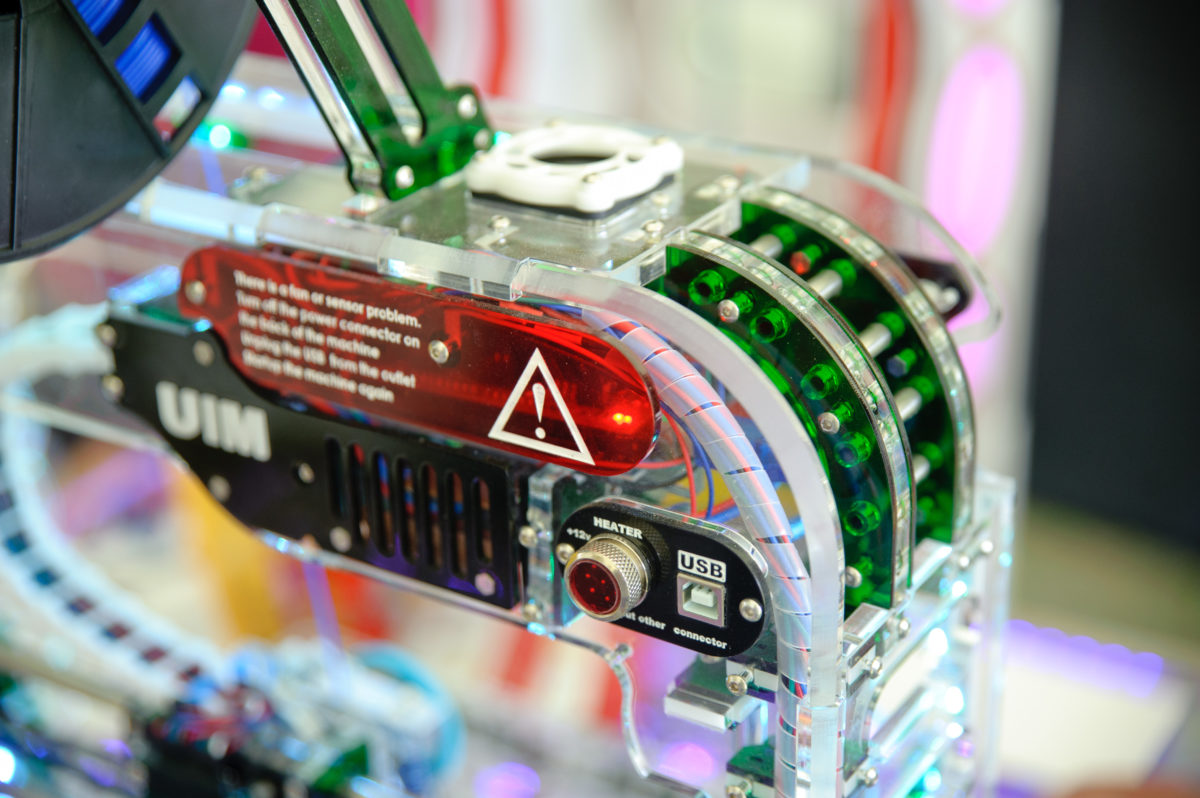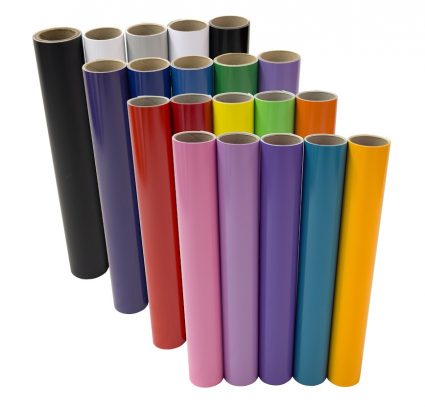The Best Types of Heat Transfer Vinyl

In today’s blog, we’re delving into the world of heat transfer vinyl. Heat transfer vinyl, commonly shortened to just “HTV,” has gained popularity among educational settings as a versatile tool for creating vibrant, durable designs on various materials. Get ready to discover how this versatile material enhances projects organized by students or staff.
In this guide, we will navigate through the best types of heat transfer vinyl options, highlighting their different features, pros and cons, and educational applications. Whether you’ve been using heat transfer vinyl for a long time, or you’re excited to start incorporating new creative elements into your classroom, we’ve got you covered.
Prepare your heat press and get ready to unleash your creativity!
What is heat transfer vinyl?

Clothing and garments can be customized and decorated with heat transfer vinyl. Your chosen design is printed onto HTV plastic or films, then cut down to size. A heat press machine uses a high temperature to attach the vinyl design to another surface.
Cotton, polyesters, and other fabrics can be heat pressed with vinyl, making it popular for uniforms and “school spirit” items. In addition to working with fabric, 3D heat press machines can adhere vinyl to mugs, wooden items, and more.
How does heat transfer vinyl work?
Heat transfer vinyl comes in sheets or as a long roll, depending on the type of product you purchase. Before applying it to clothing, you must peel off the adhesive backing. The heat transfer sheet also has two sides: glossy and matte. The shiny side is also called a ‘carrier,’ which keeps your design in place when applied heat. When applying the carrier, always ensure the top of the carrier is facing up.
The paper will, however, be cut face down during cutting. A cutter or machine can help you safely remove your designs from heat-transfer vinyl. In addition to cutters and printers, heat transfer vinyl can be used for various applications, making the process even easier.
A surprising aspect of iron-on films and garment decorations is that they are applied to the fabric while it is hot and under pressure. Using an everyday household iron, you can gently press your desired designs into the fabric for smaller graphics and logos. Larger heat presses, designed for this purpose, are recommended for larger structures, shapes, and complicated letters and numbers.
Applying pressure and heat to the heat transfer vinyl sheet you use will be necessary. The vinyl pressing should last at most 10-15 seconds. Remember to read all instructions provided by your provider when you buy heat transfer vinyl!
Best types of heat transfer vinyl
If you are still in doubt about which of the best heat transfer vinyl is suitable for your needs, you can go through this list and discover which is the right one for you:
Universal Heat Transfer Vinyl
A universal heat transfer vinyl can adhere to nearly all materials, so it’s the perfect vinyl for most applications. With this versatile vinyl, you can apply it anywhere, whether cotton, polyester, spandex, or genuine leather.
Standard Heat Transfer Vinyl
Standard vinyl will cover your basic needs. Whether you’re just starting or creating a classic design, this is great. Generally, this applies to cotton, polyesters, and blends.
Stretchable Heat Transfer Vinyl
In particular, Stretchable Heat Transfer Vinyl may be helpful in applications involving garments that need to stretch due to the transfer, such as workout gear made of uncoated polyester.
Glossy Heat Transfer Vinyl
The glossier the vinyl, the more different it looks from the matte vinyl you typically use. This is perfect if you want to focus attention on a particular design. Other materials may also be treated with it, including cotton and polyester blends.
Glitter Heat Transfer Vinyl
With glitter heat transfer vinyl, you can add a touch of sparkle to any garment. Various glitter surfaces are available, including textured surfaces, smooth surfaces, and stretchable surfaces. Whether you’re competing in cheer or dancing, this is the right outfit. In addition to cotton, polyester, and blended materials, glitter can be applied to other materials depending on the type of glitter used.
Flock Heat Transfer Vinyl
With its suede-like hand feel and soft touch, flock heat transfer vinyl is highly popular. Since it gives a raised appearance, it is an excellent alternative to embroidery. Retro designs also work well with this material. In addition to polyester and cotton, flock can also be applied to blends.
Benefits of heat transfer vinyl
When it comes to using heat transfer vinyl in the classroom, there are a lot of different materials that can be used. One of the most popular choices is heat transfer vinyl. But what benefits do you get from it? Check out this list:
Increased Strength and Durability
Vinyl is a strong and durable material well-suited for many applications. Unlike other materials, such as plastic or metal, vinyl is less likely to break or crack under stress. It is an ideal choice for applications where strength and durability are essential, such as in the construction of prototypes or functional parts.
Excellent Chemical Resistance
Vinyl’s chemical resistance is high, so it won’t break down even if exposed to strong chemicals. With such high chemical resistance, it is an excellent choice for the healthcare and food processing industries.
Good Thermal Stability
Vinyl offers exceptional thermal stability in addition to its strength and durability. This implies it can resist high temperatures without deterioration, making it an excellent material for applications requiring thermal stability, such as those used in the automobile and aerospace sectors.
Affordable
Vinyl’s low price is an additional advantage. When compared to the costs of metals and plastics, vinyl is often a far better value. In light of this, it is a viable option for uses where the price is a primary factor.
How to choose the right HTV for your needs?
Here are some tips to help you choose the right HTV for your classroom needs:
- Type of Material You’ll Be Applying the Vinyl To: One of the most important factors to consider when choosing heat transfer vinyl is the type of material you’ll be applying to. Different types of vinyl have different levels of adhesion, so selecting a vinyl that will adhere well to the material you’re working with is essential.
For example, if you’re looking to add a design to a t-shirt, you’ll want to choose vinyl with a strong adhesive designed for use on cotton fabrics.
- Size and Scale of Your Design: Another factor to consider when choosing heat transfer vinyl is the size and scale of your design. If you’re looking to create a large design, you’ll want to choose a vinyl that is easy to work with and doesn’t require too much precision.
On the other hand, if you’re looking to create a small and intricate design, you’ll want to choose a vinyl that is easy to maneuver and doesn’t have too much stretch.
- Color of Your Design: When choosing heat transfer vinyl, you should also consider the color of your design. Some vinyl are available in multiple colors, so you can choose one that best matches the color scheme of your project.
Additionally, some vinyl is applicable for specific fabric colors, so choosing a vinyl that will work well with your material is important.
Let your students express their personality with heat transfer vinyl

You’re tired of using the same old heat transfer vinyl. It never works for you! Imagine having a heat transfer vinyl that transfers easily, doesn’t wrinkle or bubble, and is easy to weed.
AGC Education’s Heat Transfer Vinyl makes it possible to create your own custom designs in minutes. With AGC Heat Transfer Vinyl, creating a unique design with your students has never been easier! Contact us today to learn more.



